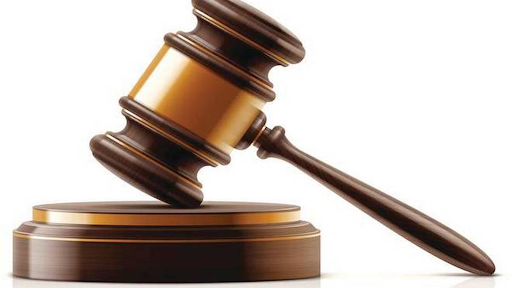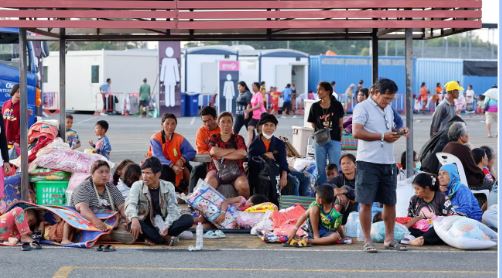



Juvenile justice system is strained, with over 55% cases pending before understaffed JJBs. The India Justice Report flags poor infrastructure, high pendency, and inconsistent assessments under the JJ Act, 2015. Strengthening capacity, training, and rehabilitation is essential to protect child rights and improve outcomes.

Copyright infringement not intended
Picture Courtesy: THEHINDU
The India Justice Report reveals that over 50,000 children are awaiting justice before Juvenile Justice Boards due to staffing and infrastructural deficits.
Definition: Juvenile Justice Boards (JJBs) are quasi-judicial bodies established under the Juvenile Justice (Care and Protection of Children) Act, 2015.
Objectives:
Constitutional Mandate: Derives legitimacy from Articles 15(3), 39(e), 39(f), 45, and 47 of the Constitution, which empower the State to ensure children's rights and welfare.
|
Juvenile Justice (Care and Protection of Children) Act 2015 Juvenile Justice (Care and Protection of Children) Act, 2015 (JJ Act) replaced the JJ Act of 2000 to create a more robust framework. Key Provisions of the Act
It allows children aged 16-18 who have committed a heinous offense to be tried as adults, subject to a Preliminary Assessment by the JJB. |
State Governments are mandated to constitute one or more Juvenile Justice Boards for every district.
Composition
Tenure: The term of appointment for social worker members is three years.
Adjudication and Inquiry: Conduct inquiries into all alleged offenses by children.
Preliminary Assessment: For children aged 16-18 accused of heinous crimes, the JJB assesses their mental/physical capacity and ability to understand the consequences of the act.
Transfer of Cases: If the preliminary assessment suggests the child should be tried as an adult, the case is transferred to the designated Children’s Court (Sessions Court).
Dispositional Orders: The JJB can issue various orders, including counseling, release on bail, placing the child in an Observation Home or Special Home, or directing community service.
Ensuring Child Rights: Protect the child’s rights throughout the legal process, including ensuring access to legal aid.
Timelines: The JJB must conclude inquiries within 4 months, extendable to 6 months in exceptional cases.
The JJB possesses the same powers as a Metropolitan Magistrate or a Judicial Magistrate First Class under the Bharatiya Nagarik Suraksha Sanhita, 2023 (which replaced the CrPC).
High Case Pendency: More than half (55%) of all cases before the Juvenile Justice Boards (JJBs) were pending. This rate shows state-wise variation, from as high as 83% in Odisha to 35% in Karnataka.
Heavy Workload: On average, each JJB has a backlog of 154 pending cases annually, straining the system's capacity to deliver timely justice.
Infrastructural & Staffing Gaps:
Data Deficiency: Unlike the National Judicial Data Grid (NJDG) for regular courts, there is no central public repository for information on JJBs, making monitoring, evaluation, and accountability extremely difficult.
Fill All Vacancies
State governments must ensure all JJBs are fully constituted with a Principal Magistrate and two qualified social workers.
Enhance Infrastructure
Establish 'Places of Safety' in every state and ensure JJBs have child-friendly premises.
Capacity Building
Implement mandatory, regular, and specialized training programs for all stakeholders on the principles of the JJ Act.
Strengthen Data Management
Develop a centralized, real-time public data portal for JJBs to improve monitoring, transparency, and accountability.
Guaranteed Legal Aid
Ensure every JJB has a functional and well-resourced legal aid clinic attached to it.
Increase Budgetary Allocation
Provide adequate funding for the operational needs of JJBs, Child Care Institutions (CCIs), and for creating effective rehabilitation and reintegration programs.
Strengthen Inter-Agency Coordination
Ensure better collaboration between JJBs, Child Welfare Committees (CWCs), Special Juvenile Police Units (SJPUs), and District Child Protection Units (DCPUs).
The India Justice Report highlights that over half of cases are pending due to understaffed and poorly resourced Juvenile Justice Boards (JJBs). To make JJBs effective child rights guardians requires immediate focus on capacity, training, and rehabilitation.
Source: THEHINDU
|
PRACTICE QUESTION Q. Critically examine the role of Child Welfare Committees and Juvenile Justice Boards in ensuring child protection under the Juvenile Justice Act, 2015. 150 words |
A JJB is a quasi-judicial body established in every district to adjudicate all matters concerning children in conflict with the law. Its primary function is to conduct inquiries and pass orders with a child-friendly approach, focusing on the child's rehabilitation and social reintegration rather than punishment.
The amendment was largely a response to the public outcry after the 2012 Delhi gang rape case (Nirbhaya case), where one of the perpetrators, being just under 18, received a minimal sentence. The amendment introduced a provision allowing children aged 16-18 who commit 'heinous crimes' to be tried as adults after a preliminary assessment by the JJB.
It is an assessment conducted by the JJB for children aged 16-18 who are alleged to have committed a heinous offence. The JJB assesses the child's mental and physical capacity to commit the offence, their ability to understand its consequences, and the circumstances in which it was committed. Based on this assessment, the JJB decides whether the child should be tried as an adult by the Children's Court.




© 2025 iasgyan. All right reserved